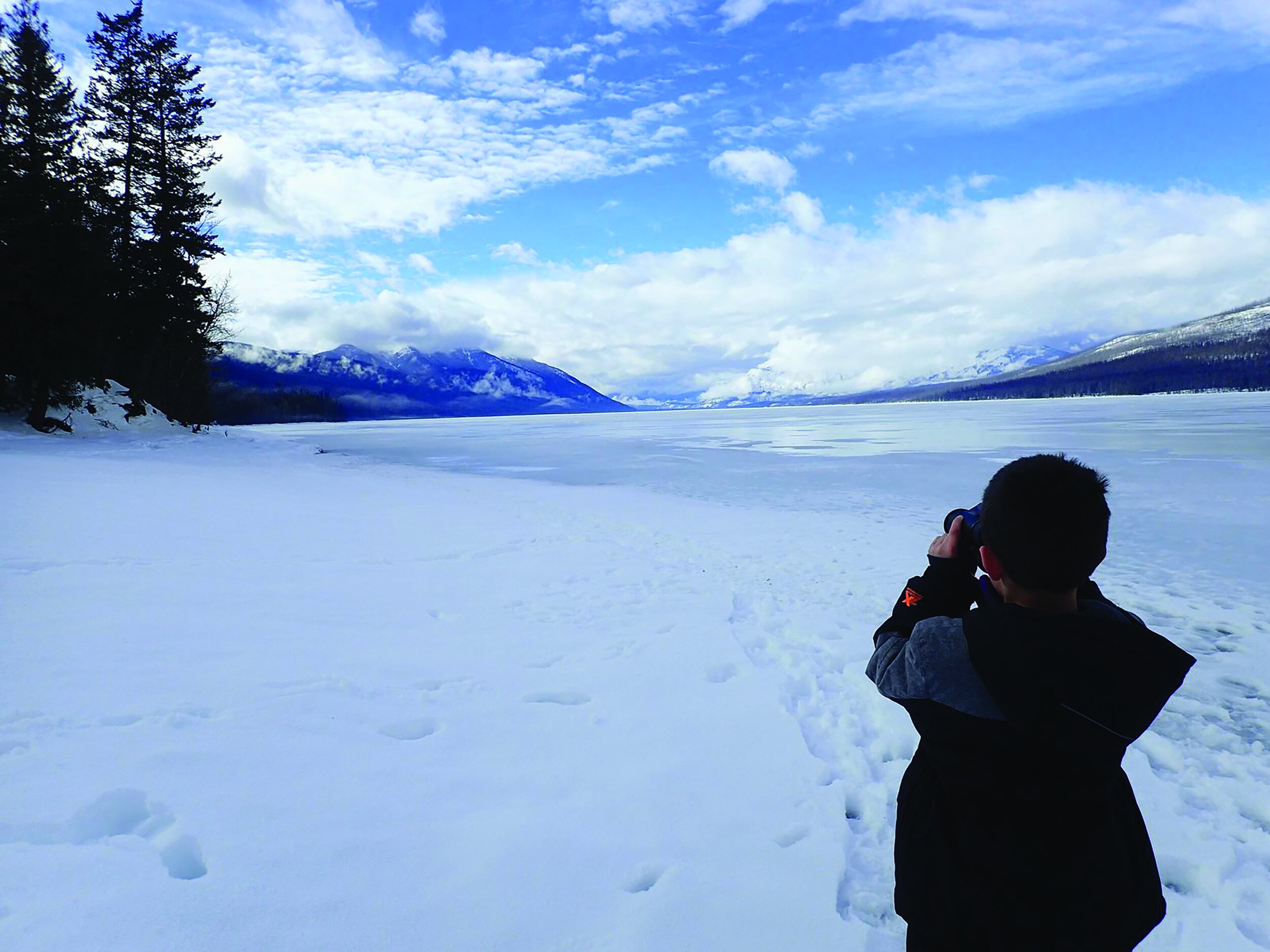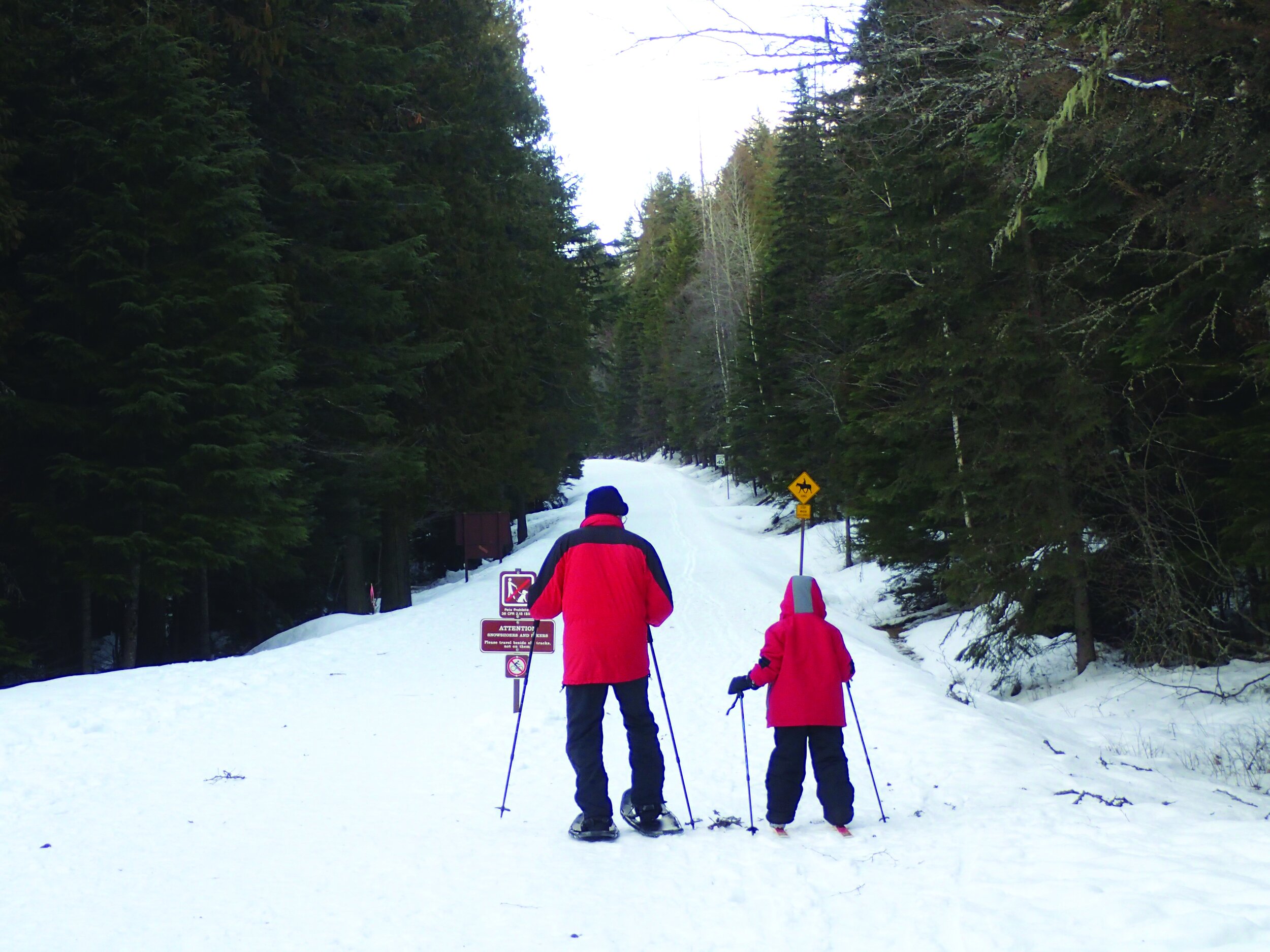Winter in Glacier Park
An opportunity for solace and reflection
Written by Amy Grisak
Photography by Amy Grisak
Going-to-the-Sun Road is just shy of six miles from the Lake McDonald Lodge parking area to the Avalanche Lake campground and trailhead to Avalanche Lake, making this a popular trip for cross-country skiers and snowshoers.
Winter months in Glacier National Park provide a sharp contrast to the wall-to-wall people clamoring to soak in the beauty of the park during the summer. A respite for those hardy enough to visit, the frozen landscape beckons intrepid souls to see Glacier in an entirely new light.
Aptly named because of the presence of glaciers that continue to carve out the high country of the park, Glacier National Park shines in the winter. The mountains appear larger and more imposing, the air crisper, and the quiet almost palpable. It takes more effort to see these sights, but with snowshoes or cross-country skis, visitors are bound to have a memorable experience.
One of the most popular areas to visit during the winter is the west side of the park. The Apgar Visitor Center is sometimes open on the weekends during the winter, depending on staffing availability, but even if the interpretative rangers are not there, the restrooms are open. There are also vault toilets at Lake McDonald Lodge for those wishing to venture along Going-to-the-Sun Road.
Here are a few of the options along this side of the park:
Going-to-the-Sun Road is just shy of six miles from the Lake McDonald Lodge parking area to the Avalanche Lake campground and trailhead to Avalanche Lake, making this a popular trip for cross-country skiers and snowshoers. The road is never groomed along this fairly level section of the road, but there are often plenty of ski tracks to follow. Traveling along the dense old-growth forests and along McDonald Creek is a peaceful outing where there is little sound other than the moving water. Often times pine martens, grouse and snowshoe hares will be seen.
Longing for solitude? Head to the more remote east side. Keep in mind that there are very few, if any, services open, so be sure to have a full tank of gas and everything you need before venturing beyond West Glacier. The east side is also known for its wind, and do not take it lightly. Even a brisk breeze can cause wind chill issues, along with reduced visibility.
The road into the Two Medicine Valley is gated approximately four miles past East Glacier as a starting point for a trip into this secluded area. There are not as many stunning views during most of the trek into the valley because of the trees along the way, but it is roughly five miles to the Running Eagle Falls parking area. This unique waterfall features water flowing through the middle of the rock face, as well as over the top when the water is flowing strongly, but will very likely be a frozen ice sculpture this time of year.
The Saint Mary area is always stunning and offers a number of outings of various difficulties. The historic 1913 Ranger Station near the large parking area for the Beaver Pond Loop trail is a good jumping-off point for several outings. The Beaver Pond Loop is only three miles of gently rolling hills. It's perfect for snowshoeing, particularly with kids. Starting in the same area, it's possible to ski or snowshoe four miles one-way to a beautiful overlook along the Red Eagle Lake trail.
On calm days, it’s also a treat to snowshoe or ski along Going-to-the-Sun Road. It’s nearly eight miles one-way, with a gradual climb from the St. Mary entrance to Wild Goose Island, but there’s amazing views and possible wildlife to see along the way.
One of the least-visited areas at any time of the year is the area around Marias Pass. Keep in the mind that there is no cell service, nor any businesses or homes nearby that can lend assistance, so be well-prepared. Also, check the weather ahead of time because even when it’s beautiful and blue skies in West Glacier, it can be horrible at the summit.
As magical as Glacier is during the winter, it’s not without inherent dangers. Always be prepared with proper clothes and appropriate gear as the weather can shift from a blue-sky day to snow and strong winds in a heartbeat. And always tell someone where you are going and when you plan on returning.
Avalanche danger needs to be on the top of everyone’s mind when preparing for a winter trip into Glacier. Check the Flathead Avalanche Center for recent conditions, and for those venturing into avalanche-prone areas, carry the necessary gear, including an avalanche beacon, avalanche probe, shovel and a satellite communication device. The avalanche airbag systems are also potential lifesavers. These instantly deploy upon impact and help the person rise closer to the top of the debris field. The best course of action is to do everything to avoid an avalanche in the first place, but these tools increase the chance of survival.
There are so many opportunities to explore in Glacier during the winter that it’s almost sad to see the snow melt in the spring. Even for a brief moment, it’s a unique chance to feel as if you have the park to yourself and to appreciate the frozen beauty that makes Glacier special.





